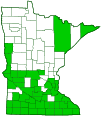winged loosestrife
(Lythrum alatum var. alatum)
Conservation • Wetland • Description • Habitat • Ecology • Use • Distribution • Taxonomy
Description |
||
Winged loosestrife is a 1′ to 4′ tall, erect, perennial forb rising from a taproot with rhizomes. The stems are 4-angled and hairless with wand-like, straight, slender, and erect branches. The stem angles are slightly winged, which gives this plant its common name. The leaves are thick, rigid, hairless, and untoothed. They are attached to the stem without leaf stalks, and are longer than the length of stem between the leaf’s base and that of the next leaf on the stem (internode). The lower leaves, those below the branches, are up to 4″ long and 2″ wide, becoming smaller as they ascend the stem. They are lance-shaped to egg-shaped, broadest below the middle or near the base, and taper to the tip. The lowest of them are opposite, the rest alternate. The upper leaves, those on the branches, are alternate, crowded, much smaller and proportionately narrower. The inflorescence is composed of usually solitary but sometimes paired flowers rising from most of the the upper leaf axils. The flowers are ¼″ to ½″ wide. The 6 petals are pinkish-purple with a purple midvein. There are usually 6, always less than 10, stamens per flower. The sepals are fused for most of their length with each other and the petals into a ⅛″ to ¼″ long, slender, hairless tube (hypanthium) with 12 narrow but sharp wings. The sepal lobes alternate with very narrow appendages that are twice as long as the sepal lobes. The fruit is a capsule. |
||
Height |
||
1′ to 4′ |
||
Flower Color |
||
Pinkish-purple with a purple midvein |
||
Similar Species |
||
Purple loosestrife (Lythrum salicaria), an introduced, invasive plant, has stems that are usually hairy, especially near the top. The inflorescence is a dense, 6″ to 14″ long, spike-like cluster of numerous flowers at the end of the stem. The flowers are larger, ½ to 1″ across. There are always at least 10, usually 12, stamens. |
||
Habitat |
||
Wet to moist. Prairies, meadows, shores, shallows. Full sun to partial shade. |
||
Ecology |
||
Flowering |
||
July to September |
||
Pests and Diseases |
||
|
||
Use |
||
|
||
Distribution |
||||
|
Sources |
|||
| 7/23/2023 | ||||
Nativity |
||||
Native |
||||
Occurrence |
||||
|
||||
Taxonomy |
|||
| Kingdom | Plantae (Plants) | ||
| Division | Tracheophyta (Vascular Plants) | ||
| Subdivision | Spermatophytina (Seed Plants) | ||
| Class | Magnoliopsida (Dicots) | ||
Order |
Myrtales (Myrtles, Evening Primroses, and Allies) | ||
Family |
Lythraceae (lythrum) | ||
| Genus | Lythrum (lythrum loosestrifes) | ||
Subordinate Taxa |
|||
|
|||
Synonyms |
|||
Lythrum dacotanum |
|||
Common Names |
|||
winged loosestrife winged lythrum wing-angled loosestrife |
|||
Glossary
Axil
The upper angle where the leaf stalk meets the stem.
Hypanthium
A cuplike tubular structure of a flower formed from the fused bases of sepals, petals, and stamens, that surrounds the pistil. Its presence is diagnostic of many families, including Rose, Gooseberry, and Pea.
Internode
The portion of a stem between nodes.
Node
The small swelling of the stem from which one or more leaves, branches, or buds originate.
Rhizome
A horizontal, usually underground stem. It serves as a reproductive structure, producing roots below and shoots above at the nodes.
Visitor Photos |
|||||
Share your photo of this plant. |
|||||
| This button not working for you? Simply email us at info@MinnesotaSeasons.com. Attach one or more photos and, if you like, a caption. |
|||||
|
|||||
MinnesotaSeasons.com Photos |
|||||
Plant |
|||||
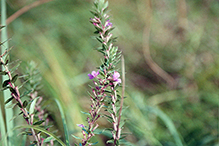 |
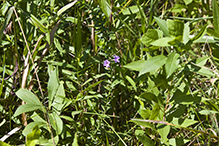 |
||||
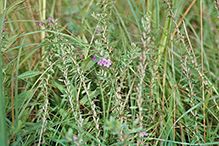 |
|||||
Inflorescence |
|||||
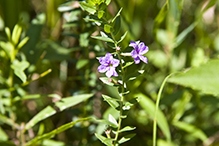 |
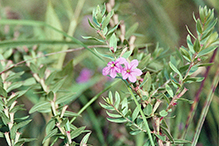 |
||||
Flower |
|||||
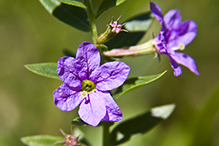 |
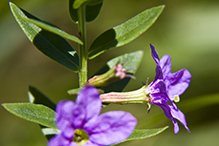 |
||||
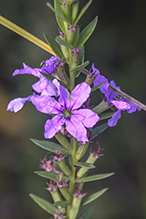 |
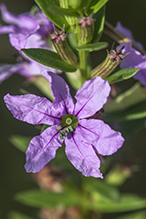 |
||||
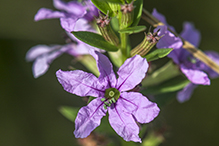 |
|||||
Leaves |
|||||
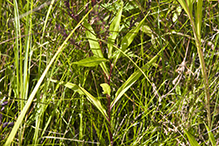 |
|||||

Visitor Videos |
|||
Share your video of this plant. |
|||
| This button not working for you? Simply email us at info@MinnesotaSeasons.com. Attach a video, a YouTube link, or a cloud storage link. |
|||
Other Videos |
|||

Visitor Sightings |
|||||
Report a sighting of this plant. |
|||||
| This button not working for you? Simply email us at info@MinnesotaSeasons.com. Be sure to include a location. |
|||||
|
|||||
MinnesotaSeasons.com Sightings |
|||||

|
Created: Last Updated: © MinnesotaSeasons.com. All rights reserved. |
